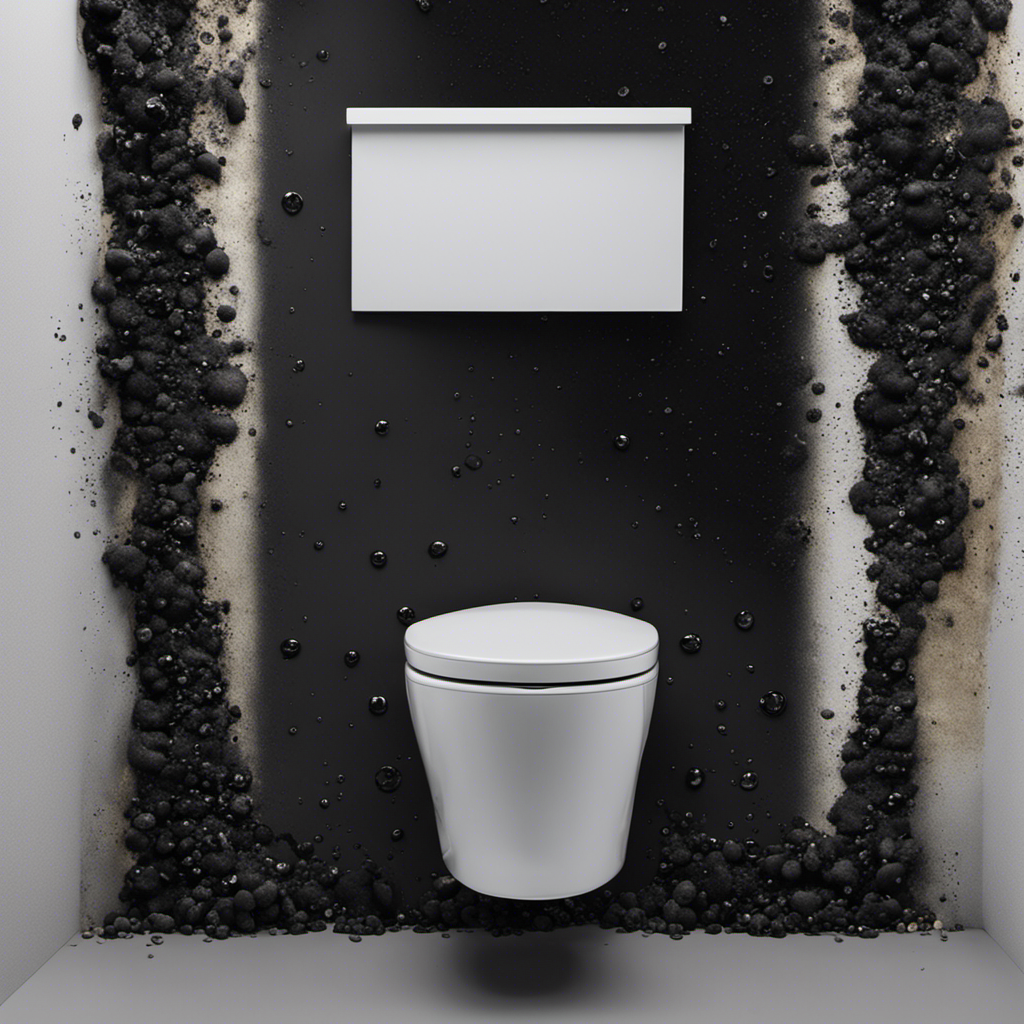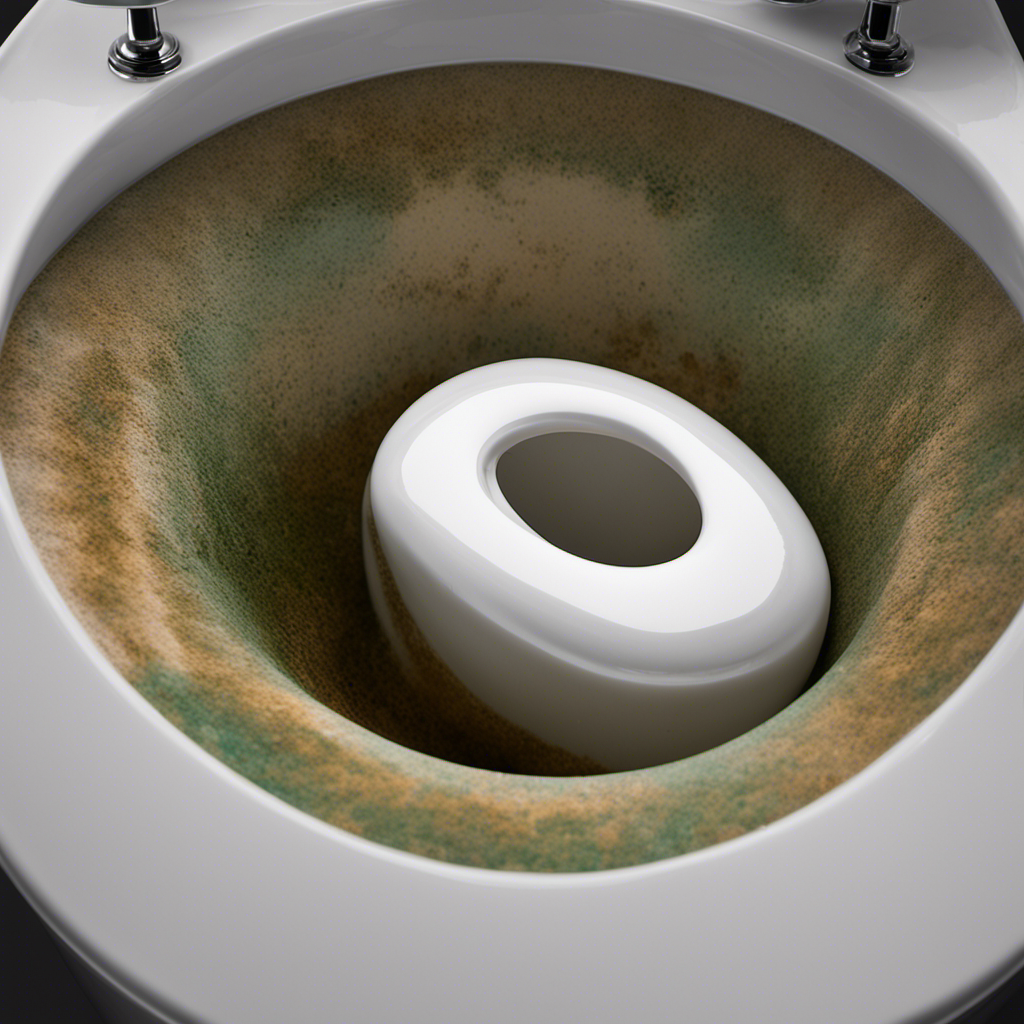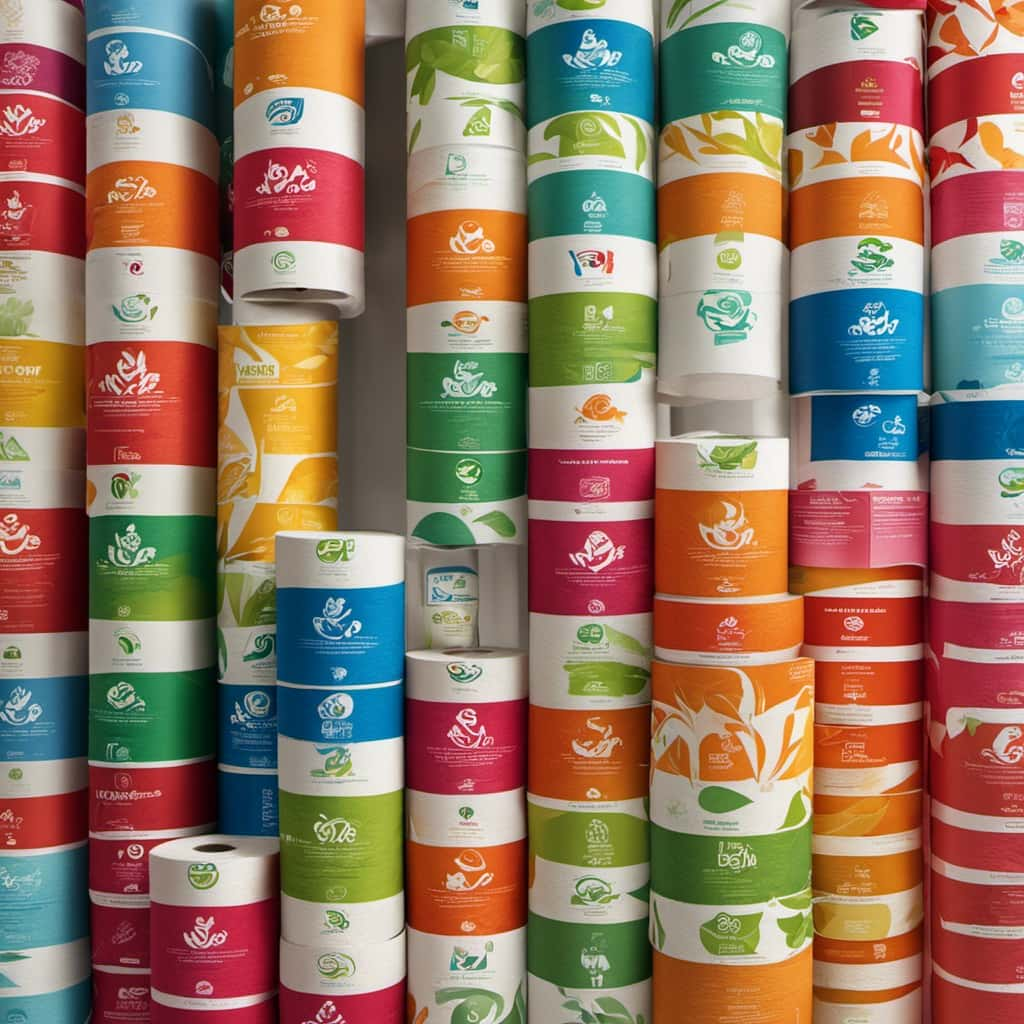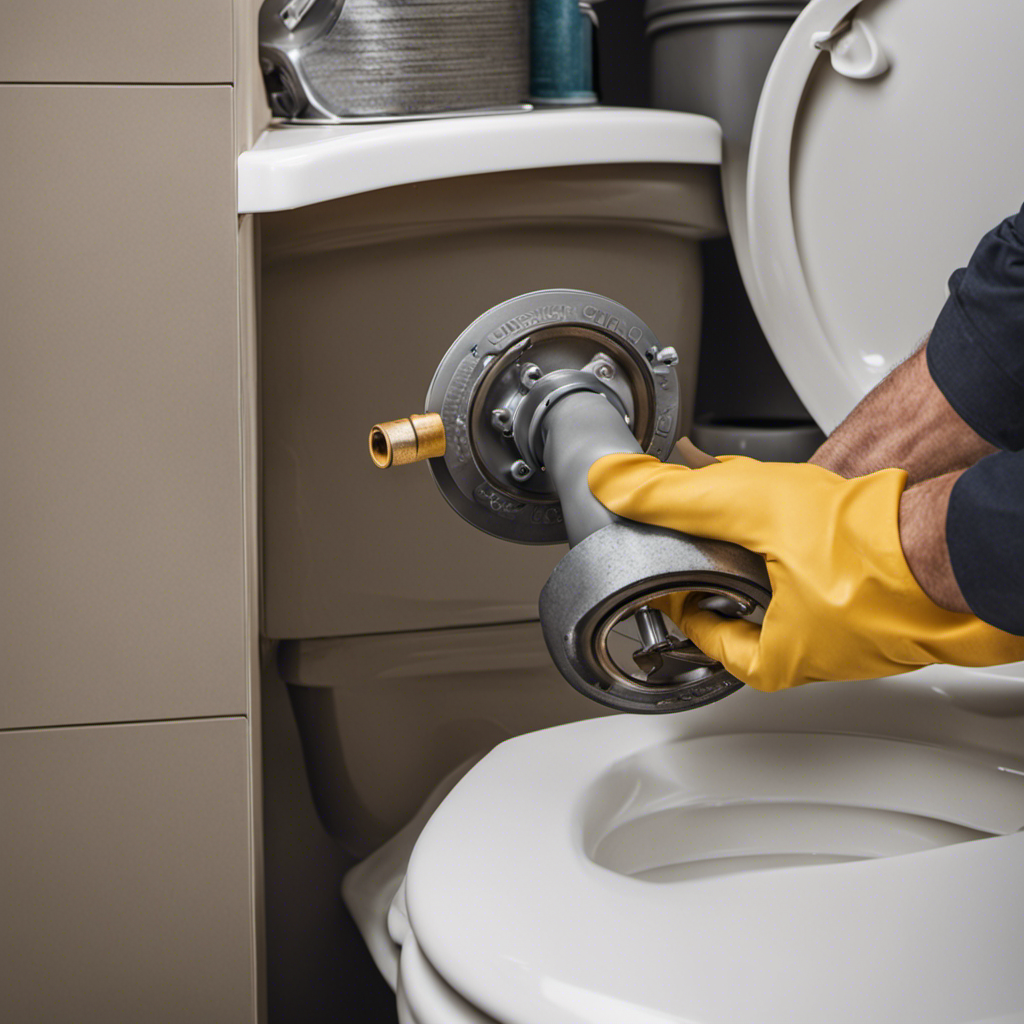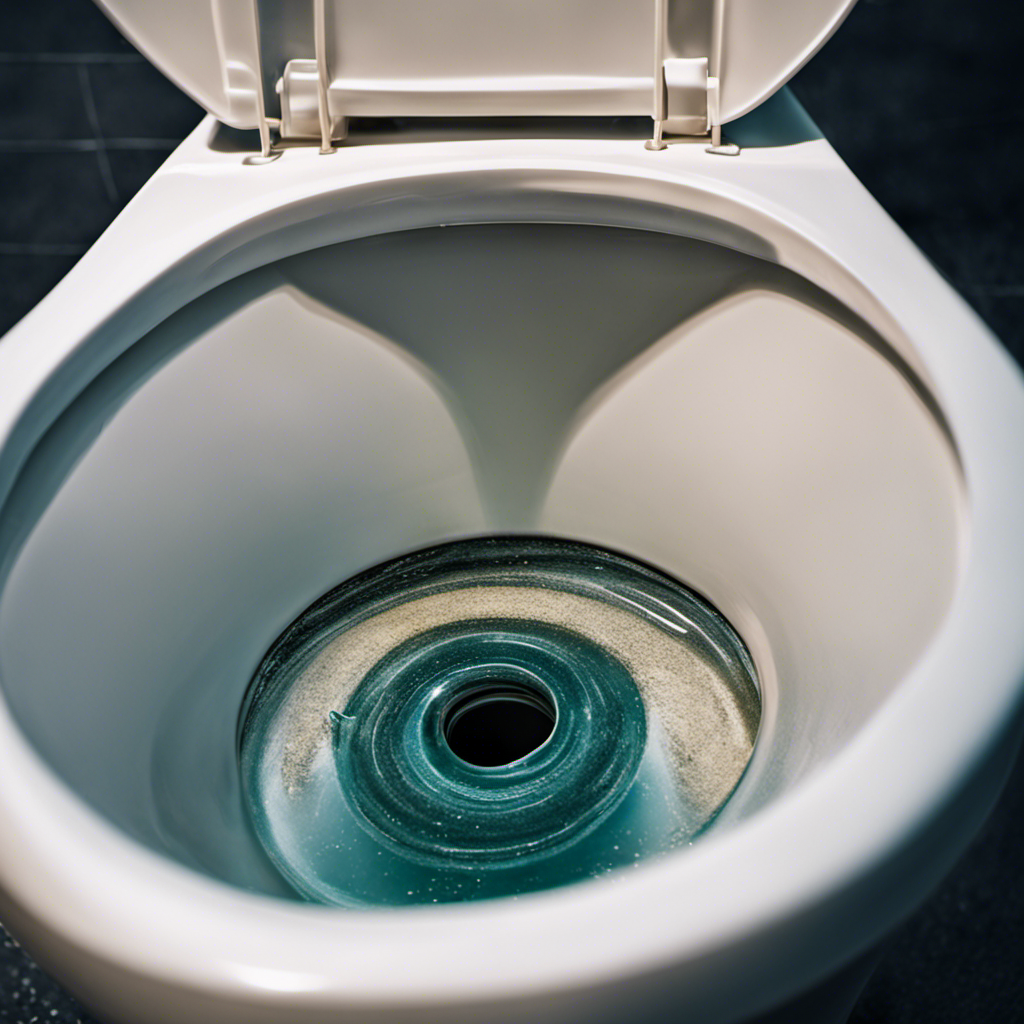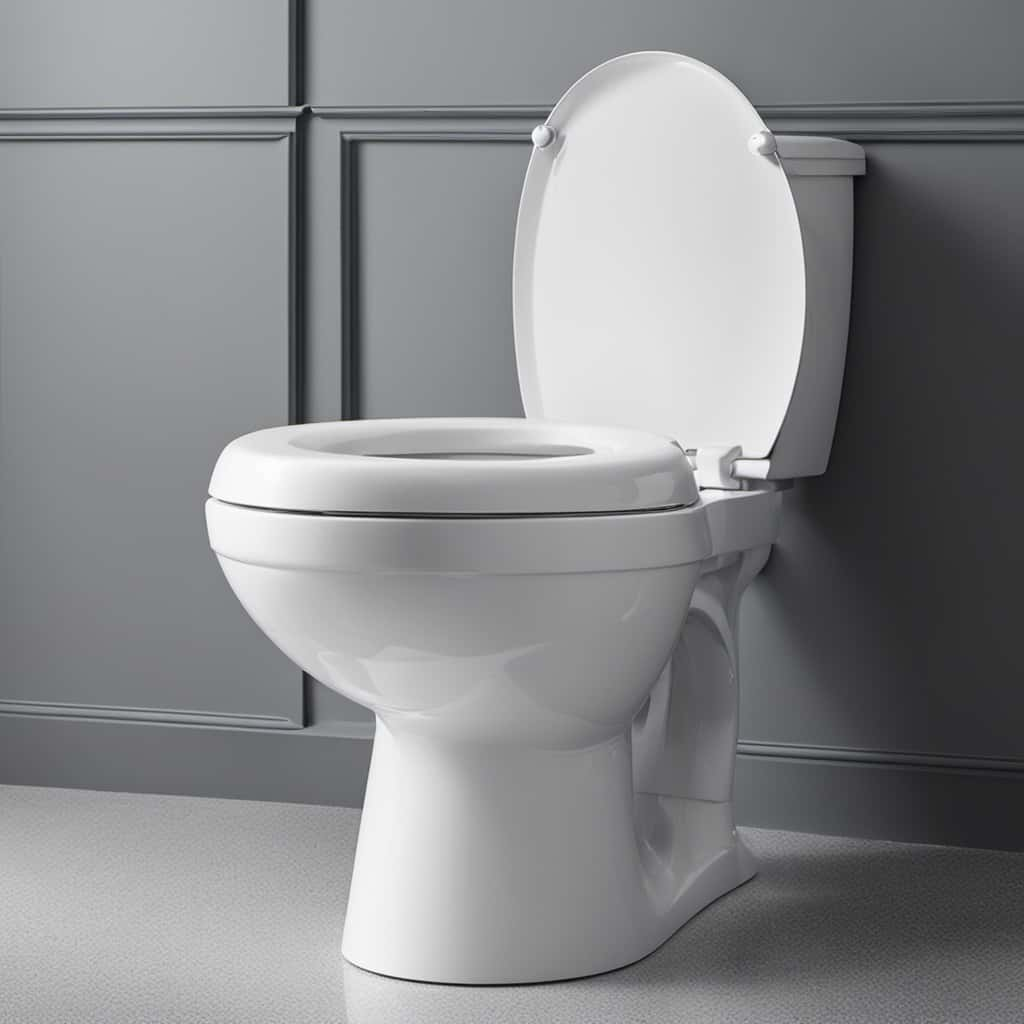As I step into my bathroom, a familiar musty odor wafts up from the toilet. It’s a frustrating problem that many of us face – why does my toilet get moldy?
In this article, I will delve into the causes of toilet mold, the common areas where it thrives, and the effects it can have on our health.
But fear not, for I will also provide you with expert tips on preventing toilet mold and effective ways to remove it.
Let’s bid farewell to that pesky mold once and for all!
Key Takeaways
- Lack of regular cleaning and inadequate ventilation are common causes of toilet mold.
- Moisture and bacteria in the bathroom, as well as damp and dark environments, contribute to mold growth.
- Mold in toilets can trigger allergies and respiratory issues, and the mycotoxins it produces can cause health problems.
- To prevent and clean toilet mold, regularly clean and disinfect the toilet, pay attention to hard-to-reach areas, use mold-resistant cleaners, and maintain clean seals.
Causes of Toilet Mold
If you don’t regularly clean your toilet, mold can develop due to the moisture and bacteria present in the bathroom. Toilet mold is not only unsightly but can also pose health risks.
Mold thrives in damp and dark environments, making the bathroom an ideal breeding ground. The combination of water splashes, humidity, and inadequate ventilation creates the perfect conditions for mold growth.
To prevent toilet mold, it is crucial to keep the bathroom well-ventilated and dry. Regularly clean and sanitize the toilet bowl, tank, and surrounding areas using a mold-fighting cleaner. Ensure that any leaks or water damage in the bathroom are promptly repaired.
Additionally, using a mold-resistant toilet seat and installing a dehumidifier can help reduce moisture levels and prevent mold growth. Remember, addressing toilet mold prevention is essential to maintain a healthy and hygienic bathroom environment.
Common Areas for Mold Growth in Toilets
When it comes to common areas for mold growth in toilets, there are a few key points to consider.
First, the underneath of the toilet rim is a prime location for mold to take hold due to the moisture and regular water splashing that occurs during flushing.
Second, the interior of the toilet tank can also be a breeding ground for mold, especially if there are any cracks or leaks present.
Lastly, the seals around the toilet bowl can be another area where mold can thrive, especially if they are worn or damaged.
Underneath Toilet Rim
To prevent mold from growing underneath your toilet rim, make sure to regularly clean and scrub the area using a toilet brush. Regular cleaning with a toilet brush helps remove any accumulated dirt, grime, and potential mold spores. Use a disinfectant cleaner to kill any existing mold and prevent further growth. Pay attention to the hard-to-reach areas around the rim, ensuring thorough cleaning. Consider using a mold-resistant toilet bowl cleaner to prevent future mold growth.
By following these guidelines, you can effectively maintain a clean and mold-free toilet rim.
Now, let’s move on to the next section about the interior of the toilet tank.
Toilet Tank Interior
Cleaning the interior of your toilet tank is essential for maintaining good water quality and preventing potential issues. Mold can easily develop in moist and dark environments, making the toilet tank a perfect breeding ground.
To prevent mold growth, it is important to regularly clean the tank. Start by turning off the water supply and flushing the toilet to drain the tank. Use a mixture of bleach and water to scrub the sides of the tank, paying close attention to any visible mold or mildew. Be sure to also clean the tank’s components, such as the flapper valve and fill valve, to ensure proper functioning.
After cleaning, refill the tank and turn the water supply back on. Regular maintenance and cleaning of the toilet tank will help prevent mold growth and ensure a healthier bathroom environment.
Toilet Bowl Seals
The toilet bowl seals should be regularly inspected and maintained to prevent any water leakage. Neglecting these seals can lead to water seeping out and causing damage to your bathroom floor or walls. Here are some tips for maintaining and preventing water leakage from toilet bowl seals:
- Check the seals for cracks or signs of wear regularly.
- Clean the seals with a mild detergent to remove any dirt or grime.
- Use a silicone-based sealant to fill in any cracks or gaps in the seals.
- Avoid using harsh chemicals or abrasive cleaners that can damage the seals.
- Consider replacing the seals every few years to ensure optimal performance.
Regularly cleaning the toilet bowl and maintaining the seals not only prevents water leakage but also helps in preventing mold growth. Mold thrives in damp environments, and a leaking toilet can create the perfect conditions for mold to grow. So, by taking care of your toilet bowl seals, you are also taking a step towards preventing toilet mold.
Effects of Toilet Mold on Health
Having mold in your toilet can negatively impact your health. The presence of mold in your toilet can trigger allergies, causing symptoms such as sneezing, coughing, and itchy eyes.
Additionally, prolonged exposure to toilet mold can have long-term effects on your health. Mold releases spores into the air, which can be inhaled and cause respiratory issues, especially in individuals with pre-existing respiratory conditions.
Furthermore, mold produces mycotoxins, which are toxic substances that can lead to various health problems, including respiratory infections, skin irritations, and even neurological issues.
It is important to address toilet mold promptly to avoid these health risks. Regular cleaning and proper ventilation can help prevent the growth of mold in your toilet and maintain a healthy environment in your bathroom.
Tips for Preventing Toilet Mold
To prevent mold growth in your toilet, there are some effective techniques and easy maintenance tips that I’ve found to be highly successful.
Firstly, ensuring proper ventilation in the bathroom is crucial, as mold thrives in damp and humid environments.
Regularly cleaning and disinfecting the toilet bowl and surrounding areas with a bleach-based solution can also help prevent mold from taking hold.
Lastly, regularly checking for and fixing any leaks or water damage in and around the toilet can go a long way in preventing mold growth.
Effective Mold Prevention
One way you can effectively prevent mold in your toilet is by regularly cleaning and disinfecting it. Mold thrives in damp environments, so keeping your toilet clean and dry is essential. Here are some effective cleaning methods and natural mold prevention techniques to help you maintain a mold-free toilet:
- Use a toilet brush and cleaner to scrub the bowl regularly, removing any built-up grime or stains.
- Wipe down the exterior of the toilet with a disinfectant spray or wipe.
- Keep the bathroom well-ventilated to reduce moisture and humidity.
- Use natural mold prevention methods like vinegar or hydrogen peroxide to kill any existing mold spores.
- Consider using a mold-resistant toilet seat or installing a bathroom exhaust fan to further prevent mold growth.
By following these effective cleaning methods and natural mold prevention techniques, you can keep your toilet free from mold and maintain a healthy bathroom environment.
Now, let’s move on to easy maintenance techniques to help prolong the cleanliness of your toilet.
Easy Maintenance Techniques
After learning about effective mold prevention, I now want to share some easy maintenance techniques that can help keep your toilet mold-free.
Regular cleaning is key to preventing mold growth, so make sure to clean your toilet at least once a week using a bathroom cleaner or a mixture of vinegar and water. Also, don’t forget to scrub the toilet bowl, seat, and tank thoroughly.
Another quick prevention method is to keep your bathroom well-ventilated by opening a window or using an exhaust fan while showering. This will help reduce the moisture levels in the air, making it harder for mold to grow.
Additionally, consider using a mold-resistant toilet seat and regularly inspecting your toilet’s water supply and drainage system for any leaks or issues.
How to Remove Mold From a Toilet
You can easily remove mold from your toilet by using a mixture of bleach and water. Here are some DIY toilet mold removal methods that can help you get rid of the mold effectively:
- Start by mixing one part bleach with ten parts water in a spray bottle.
- Spray the mixture onto the affected areas of the toilet, including the bowl, tank, and seat.
- Let the solution sit for about 15 minutes to allow it to penetrate the mold.
- Scrub the moldy areas using a toilet brush or a scrub brush.
- Rinse the toilet thoroughly with clean water to remove any remaining bleach residue.
Professional Solutions for Persistent Toilet Mold
If you’re unable to remove persistent toilet mold with DIY methods, it’s time to consider professional solutions.
While DIY remedies can be effective for mild cases of toilet mold, sometimes the problem persists despite our best efforts.
In such cases, professional cleaning services can provide the expertise and tools necessary to tackle the issue.
Professional cleaners have access to specialized cleaning agents that are designed to effectively remove mold and prevent its regrowth.
They also have the knowledge and experience to identify the underlying causes of the mold, such as plumbing issues or inadequate ventilation, and can address these issues to prevent future mold growth.
Frequently Asked Questions
Can Toilet Mold Spread to Other Areas of the Bathroom?
Toilet mold can spread to other areas of the bathroom if not properly addressed. It can cause health problems like allergies and respiratory issues. To prevent it from coming back, regularly clean and disinfect the toilet and improve ventilation in the bathroom.
Is Toilet Mold More Common in Older Homes or Newer Homes?
Toilet mold is more common in older homes due to factors like outdated plumbing and poor ventilation. Preventing toilet mold involves regular cleaning, proper ventilation, and fixing any plumbing issues promptly.
Can Using Bleach Effectively Remove Toilet Mold?
Using bleach can effectively remove toilet mold. However, vinegar is a more natural and eco-friendly option. Commercial mold removal products are also available, but they may contain harsh chemicals.
Does the Type of Toilet Bowl Material Affect the Growth of Mold?
Toilet bowl material comparison can impact mold growth. Moisture plays a significant role in mold development. Porous materials like wood or older, worn-out toilets may provide a better environment for mold to grow compared to non-porous materials like ceramic or porcelain.
Are There Any Natural Remedies or Homemade Solutions to Prevent Toilet Mold?
There are natural remedies and homemade solutions to prevent toilet mold. By using vinegar or hydrogen peroxide, regularly cleaning the toilet, and keeping the bathroom well-ventilated, mold growth can be reduced.
Conclusion
In conclusion, toilet mold can be a common and frustrating issue for many homeowners. By understanding the causes of mold growth, such as high humidity and poor ventilation, we can take proactive steps to prevent it.
Regular cleaning and maintenance, along with keeping the toilet area dry, are key in avoiding mold accumulation. If mold does appear, it’s crucial to remove it promptly using appropriate cleaning agents and protective gear.
For persistent mold problems, seeking professional solutions can ensure a mold-free and healthier toilet environment.
